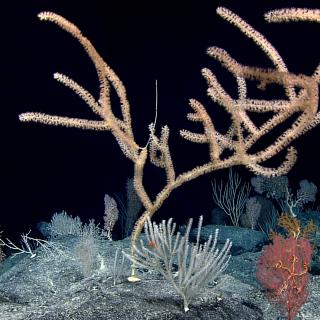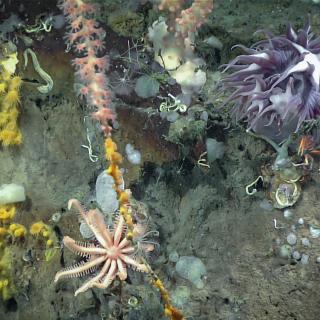Palau Expeditions Granted Name: Lebuu’s Voyage

Lebuu could be considered Palau’s first explorer and was one of the first Pacific Islanders to visit Great Britain. Introduced to the Western world in 1788 by the writings of George Keate, Lebuu was a young man from Koror, Palau who sailed alongside Europeans. In 1783, upon encountering the shipwrecked crew of the East India Company ship Antelope, Palauan High Chief Ibedul generously welcomed and provided the crew timber and expertise to build a new ship, named Oroolong, in only two months. When the marooned sailors were prepared to depart, they invited a Palauan to join. High Chief Ibedul’s son Lebuu elected to join their voyage. In November 1783, Lebuu departed on his worldwide voyage.
“I would wish you to inform Lebuu, of all things which he ought to know, and make him an Englishman. The subject of parting with my son I have frequently revolved; I am well aware that the distant countries he must go through, differing much from his own, may expose him to dangers, as well as to diseases that are unknown to us here, in consequence of which he may die; I have prepared my thoughts to this; I know that death to all men is inevitable, and whether my son meets this event at Palau, or elsewhere, is immaterial.
I am satisfied, from what I have observed of the humanity of your character, that, if he is sick, you will be kind to him; and should that happen, with, your utmost care cannot prevent, let it not hinder you, or your brother, or your son, or any of your countrymen, returning here; I shall receive you, or any of your people, in friendship, and rejoice to see you again”. — High Chief Ibedul
Enormously popular throughout Europe for half a century after the voyage, the story of Lebuu’s life and journey was translated over twenty times in English and into a dozen foreign-language editions.
This fall — 241 years after Lebuu set sail — two scientific expeditions led by Ocean Exploration Trust in partnership with NOAA Ocean Exploration aboard Exploration Vessel Nautilus will visit Palau. Over the last six months, stakeholders with a range of expertise in traditional knowledge, following an endorsement from the Council of Chiefs and meetings with the Society of Historians and Koror’s House of Traditional Leaders, began composing expedition names for these voyages. In crafting appropriate names for the expeditions, the nomenclature committee found inspiration in Palau’s own history of exploration.
The two expeditions to Palau are named Lebuu’s Voyage I (NA167) and Lebuu’s Voyage II (NA168). Expedition naming is part of the ongoing collaboration with the Palauan community and part of a larger initiative stemming from the designation of the Bul traditional management practice of conservation upon the Palau National Marine Sanctuary. It is a strategic effort to advance traditional knowledge and best practices in tandem with scientific understanding. This process is being facilitated by the Bureau of Cultural & Historical Preservation Office, OneReef, and the Palau International Coral Reef Center.
Often referred to as one of the seven wonders of the underwater world, Palau’s waters are known to be rich in both natural and cultural resources. However, most of this knowledge concerns shallow water, and very little information exists from the deep waters surrounding Palau. Further exploration of this area is urgently needed to address management and science priorities locally, including a better understanding of the deep-sea biodiversity of the vast Palau National Marine Sanctuary.
As Nautilus visits Palau, we gratefully acknowledge generations of Palauans and today’s stewards of these waters. As OET’s ship, our team, and our audience of explorers participating through telepresence enter Palau National Marine Sanctuary, we recognize the responsibility to enter this place with a mindset of humility and learning. As we aim to support the US Government’s commitment to map the Palau National Marine Sanctuary and acquire data to support the Palau National Marine Sanctuary Science and Monitoring Strategy, we also aim to learn about the rich culture and history of ocean exploration in Palau - honoring Lebuu’s Voyage.
Throughout the expedition planning process, Ocean Exploration Trust and partners have had the great opportunity to work closely with the Palau International Coral Reef Center and other Palauan agency staff to inform research priorities at sea, integrate priorities including uplifting Palauan language, and lay a foundation for many years of deep ocean exploration with the development of expedition cultural protocols.

Lebuu's Voyage I - Palau
Palau National Marine Sanctuary (PNMS) –protection secured by Euotelel a Klingil a Debel Belau– is one of the most ambitious conservation efforts on Earth. Despite being rich in natural and cultural resources, there is very little data available from deep ocean habitats protected within PNMS. Working closely with the Palau International Coral Reef Center (PICRC), NOAA Ocean Exploration, and other Palauan and U.S.

Lebuu's Voyage II - Palau
Building on the progress in the first expedition, this 11-day expedition will continue exploring Palau National Marine Sanctuary (PNMS) to understand seafloor features and the biodiversity that call deep sea habitats around Palau home. Specific cruise objectives will continue to be refined as we work with community and scientific partners.





